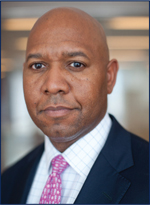
- Ather Williams III
- Head of Global Transaction Services, Bank of America Merrill Lynch
by Ather Williams III, Head of Global Transaction Services, Bank of America Merrill Lynch
 This special supplement, sponsored by Bank of America Merrill Lynch, comes at a time of growing inward investment in Latin America. This is good news for business in the region, and good news for those banks, such as Bank of America Merrill Lynch, which have continued to invest in building the technology, expertise and global reach to help corporations grow successfully around the world.
This special supplement, sponsored by Bank of America Merrill Lynch, comes at a time of growing inward investment in Latin America. This is good news for business in the region, and good news for those banks, such as Bank of America Merrill Lynch, which have continued to invest in building the technology, expertise and global reach to help corporations grow successfully around the world.
As the global economy returns to growth, the relationship between banks and corporate treasurers is changing. It might be tempting to imagine that transaction bankers and their clients should simply press the ‘reset’ button and go back to the way we worked before the global economic crisis, but that is neither possible nor desirable.
For the past seven years, banks and corporations have been cautiously navigating their way through a transaction banking paradigm shift, towards a future in which the quality of a banking relationship counts more than its size. This shift, ushered in by the changing regulatory environment, has not reached its equilibrium.
A dramatically changed regulatory and industry environment, combined with new technologies and products, has the potential to reshape the industry in terms of how banks provide liquidity visibility and control so that clients can better manage, protect, collect and move their money across the globe.
For banks, key catalysts for this change have been increased capital buffers and new regulations that increase the costs of providing basic lending and depository services. As a result, corporate treasury teams may need to reduce the number of bank providers they retain as the true costs of operating multiple accounts with multiple providers are exposed.
Our pledge is to be a trusted advisor to the clients we serve, able to call on whatever bank resources are required to best serve the client’s need. That may mean some of the lines that have traditionally separated transaction services from other banking activities are crossed. Clients need their banks to speak and act with one voice, delivering advice and service seamlessly across vast product capabilities.
This move towards greater integration of banking services mirrors changes in the corporate world, where the overlaps between treasury and other departments, such as procurement and operations, are offering fertile ground for greater efficiencies. Underpinning this co-operative way of working is a revolution in technology.
Moreover, BofA Merrill is able to place the experience we have gained in working with thousands of global corporations in territories across the world at the disposal of every client. It is our global footprint that allows us to develop the deep in-house expertise on which our clients rely. *
Nowhere is this truer than in the constantly shifting landscape of regulation. Our detailed, current knowledge of local regulations, especially in the faster-growth, higher regulated economies in Asia, is helping our clients enter new markets with a clear understanding of the regulatory environment they will face.
That knowledge is demonstrated to great effect in this supplement, in which Margarita Carrillo examines enhancements and payments and how technology is making treasury more efficient, Moises Vidal and Tom Avazian comment on institutional investors in the region, Liba Saiovici discusses cutting-edge payments and receivables and Ana Kube investigates supply chain finance in Andean, Central America and the Caribbean. Finally, Luiz Carlos Couto and Martin Barrios explain how treasurers are becoming more efficient.
The future for treasury in Latin America looks fascinating: I hope you find this supplement a useful guide.
* All services/products may not be available in all jurisdictions and are subject to change without notice.










